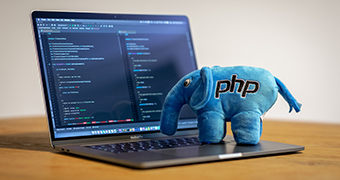Category
Networking

Description
The CompTIA Network+ exam is an IT certification that confirms you possess the necessary networking knowledge and abilities to pursue a career in IT infrastructure. With CompTIA Network+, you are equipped to support the network regardless of the platform, unlike other vendor-specific networking certifications.
Course Content
23 MODULEs • 3 months total length
Network basics • Network components • Network resources • Network Geography • Understanding Network Geography • Wired Network Topology (OBJ. 1.2) • Wireless Network Topology • Internet of Things (IoT)
OSI Model Overview • Layer 1 (Physical Layer) • Layer 2 (Data Link Layer) • Layer 3 (Network Layer) • Layer 4 (Transport Layer) • Layer 5 (Session Layer) • Layer 6 (Presentation Layer) • Layer 7 (Application Layer) • The OSI Model • Encapsulation and Decapsulation
TCP/IP Model • Data Transfer Over Networks • Ports and Protocols • Finding Open Ports • IP Protocol Types
Media and Cabling • Copper Media • Building a Cable • Fiber Media • Transceivers • Cable Distribution • Wiring a Network • Testing the Network
Ethernet Fundamentals • Network Infrastructure Devices (Overview) • Hands-on with Devices • Additional Ethernet Switch Features • Spanning Tree Protocol • Virtual Local Area Network (VLAN) • Specialized Network Devices • Other Devices
IP Addressing • IPv4 Addressing • IPv4 Data Flows • Assigning IP Addresses • Computer Mathematics • Subnetting • Subnetting Practice • Subnetting by Hand • IPv6 Addressing • IPv6 Data Flows • IP Addressing
Routing Fundamentals • Routing Tables • Routing Protocols • Address Translation (NAT and PAT) • Multicast Routing
Network Services • DHCP • Hands-on with DHCP • DNS • Hands-on with DNS • NTP
Wide Area Networks (WAN) • Wired WAN Connections • Wireless WAN Connections • WAN Technologies (Part 1) • WAN Technologies (Part 2) • Hands-on with WANs • Other WAN Connections
Wireless Networking (WLAN) • WLAN Service Sets • Wireless Antennas • Hands-on with Antennas • Wireless Frequencies • Wireless Security • Hands-on with Wireless • When Security Fails
Cloud and the Datacenter • Virtual Network Devices • Voice Over IP (VoIP) • Cloud Computing • Cloud Concepts • Virtualization and Cloud Computing • Infrastructure as Code • Connectivity Options • Datacenter Architecture
Network Security • The CIA Triad • Threats and Vulnerabilities • Risk Management • Security Principles • Defense in Depth • Multifactor Authentication • Authentication Methods • Network Access Protocols • Network Access Control • Physical Security • Asset Disposal
Network Attacks • Denial of Service Attacks • General Network Attacks • Spoofing Attacks • Malware • Wireless Attacks • Social Engineering Attacks • Insider Threat
Security Technologies • Firewalls • Hands-on with Firewalls • Hands-on with Software Firewalls • IDS and IPS • Remote Access • Virtual Private Networks (VPNs) • IPSec • Simple Network Management Protocol • Network Logging • SIEM
Network Hardening • Patch Management • Password Security • Unneeded Services • Port Security and VLANs • Inspection and Policing • Securing SNMP • Access Control Lists • Wireless Security • IoT Considerations
Network Availability • High Availability • Designing Redundant Networks • Recovery Sites • Facilities Support • Quality of Service •• QoS Categorization • QoS Mechanisms
Network Policies • Plans and Procedures • Hardening and Security Policies • Common Agreements
Network Management • Common Documentation • Performance Metrics • Sensors • NetFlow Data • Interface Statistics • Environmental Sensors
Network Troubleshooting Methodology • Cable Review • Cabling Tools • Cable Signal Issues • Copper Cable Issues • Fiber Cable Issues • Ethernet Issues
Troubleshooting Wireless Networks • Wireless Considerations • Coverage and Interference • Incorrect Configurations • Captive Portal • Troubleshooting Wireless Networks
Network Tools and Commands • Software Tools • ping and traceroute • ipconfig, ifconfig, and ip • nslookup, dig, and hostname • arp, route, nbtstat, netstat • telnet, tcpdump, and nmap • Network Platform Commands
Troubleshooting Network Issues • Collisions and Broadcast Storms • Duplicate Addresses • Routing Issues • Loops • DHCP Issues • IP and VLAN Settings • Firewall Issues • DNS and NTP Issues • Network Performance Issues • Other Issues
Analyzing Output from Vulnerability Scanners (Introduction) • Scan Reports • Common Identifiers • CVSS • Vulnerability Reports • Nessus • OpenVAS and Qualys






